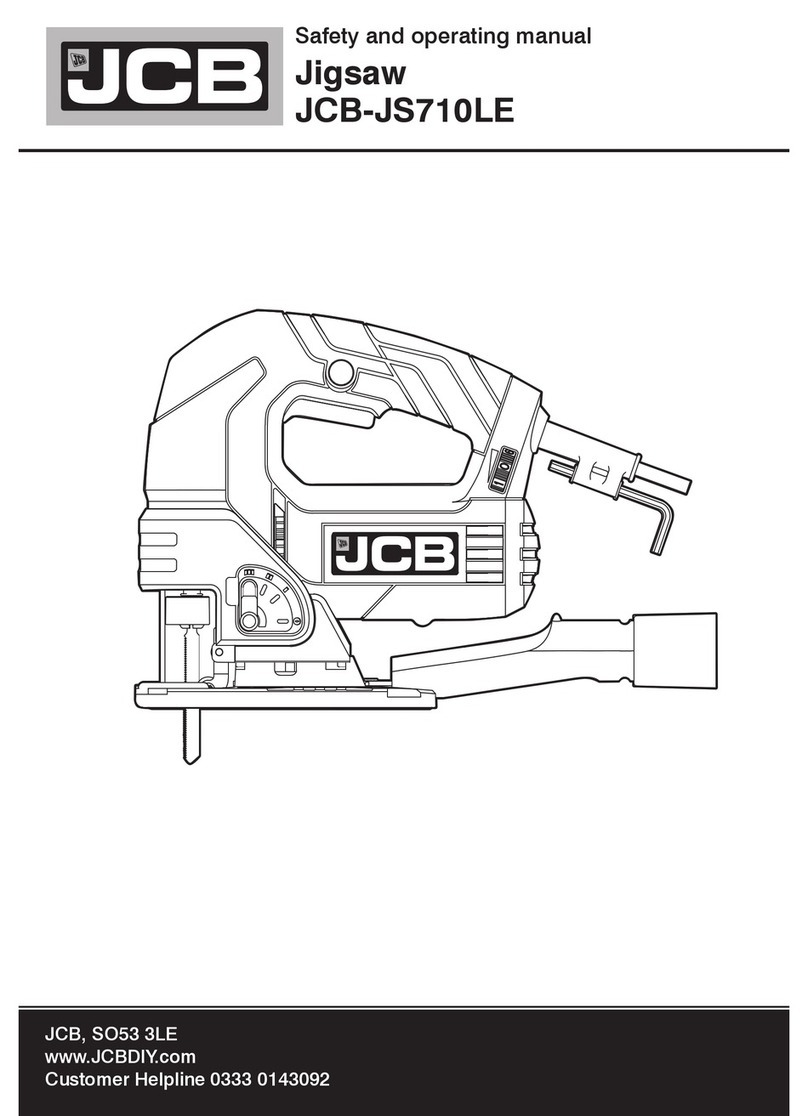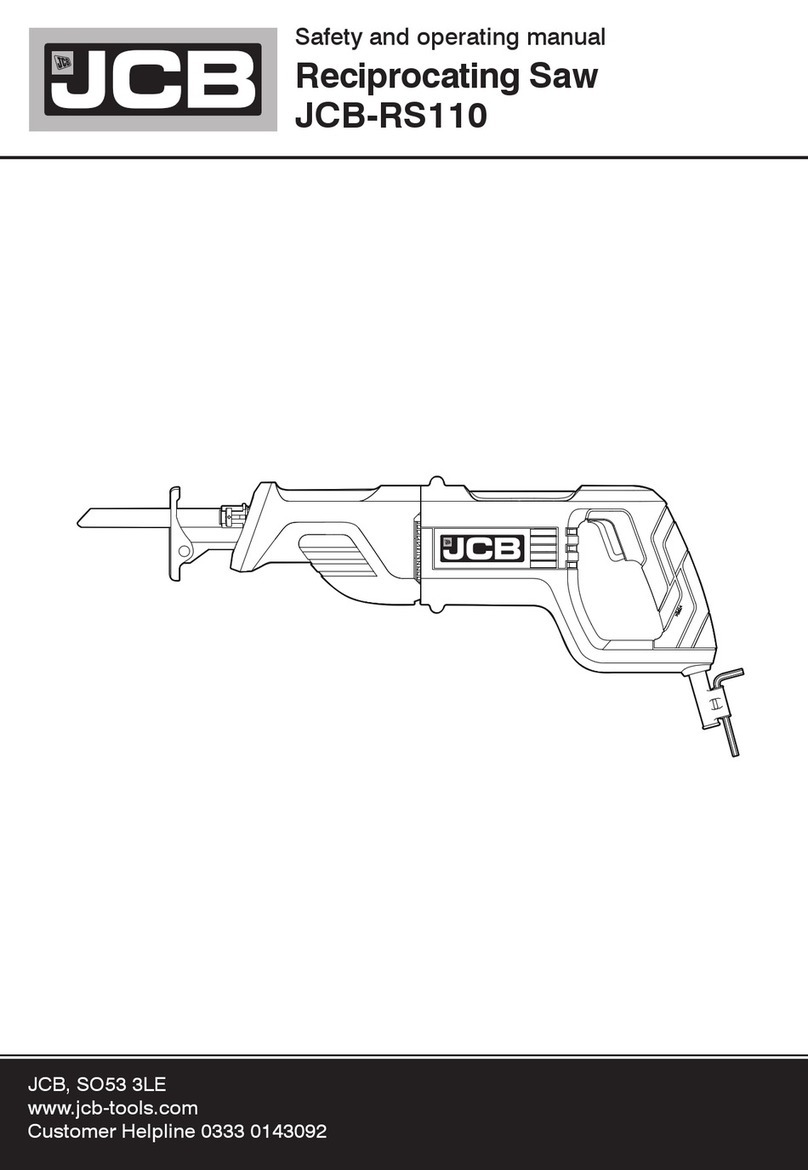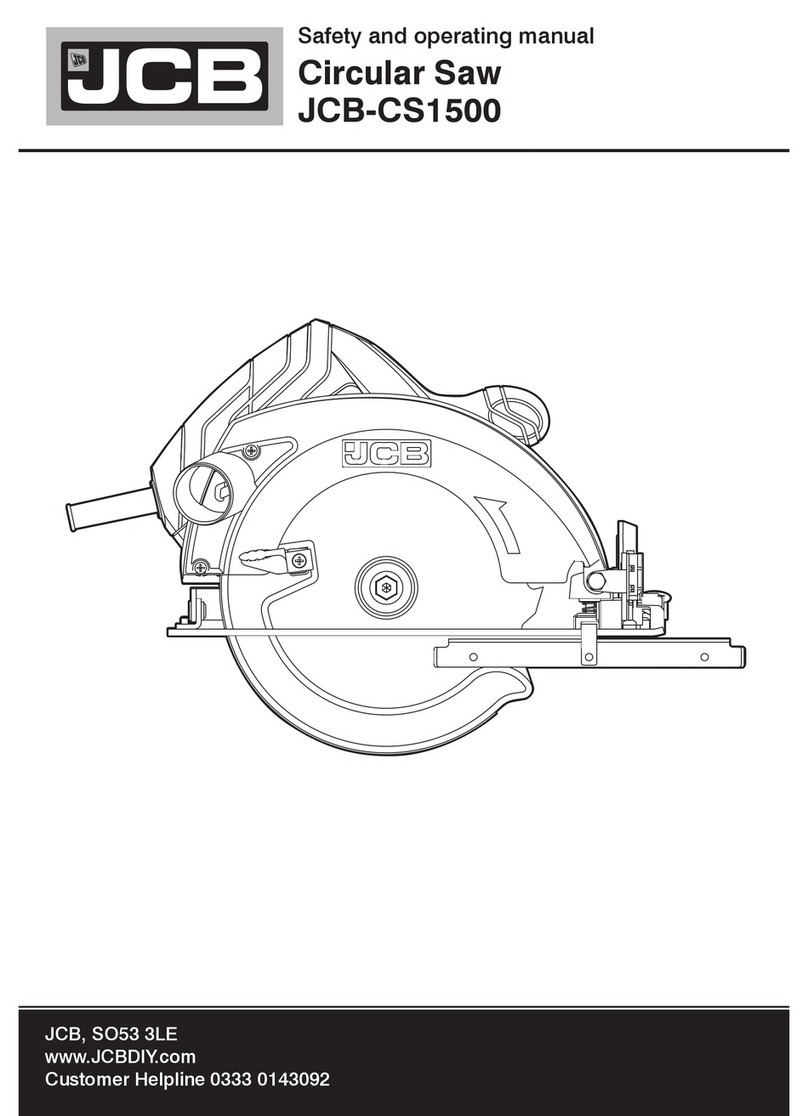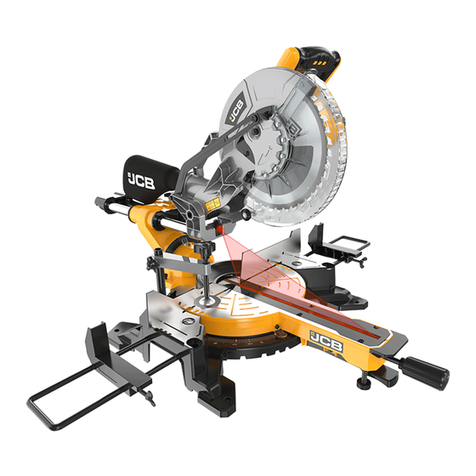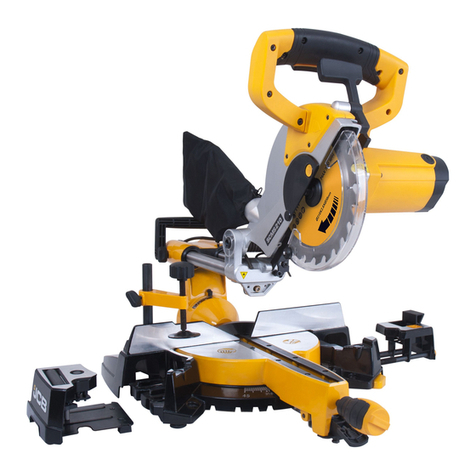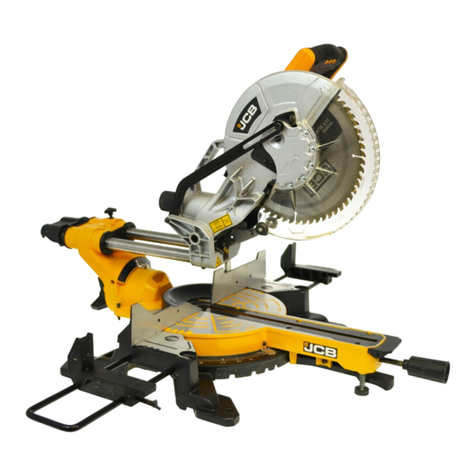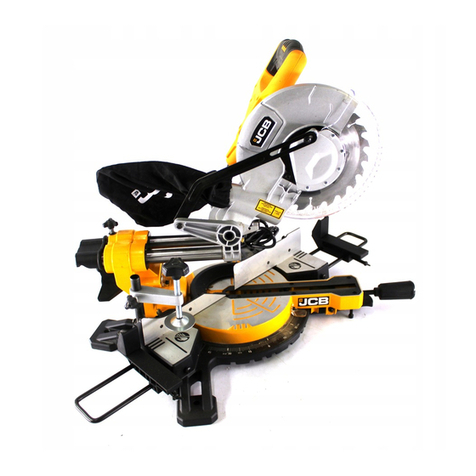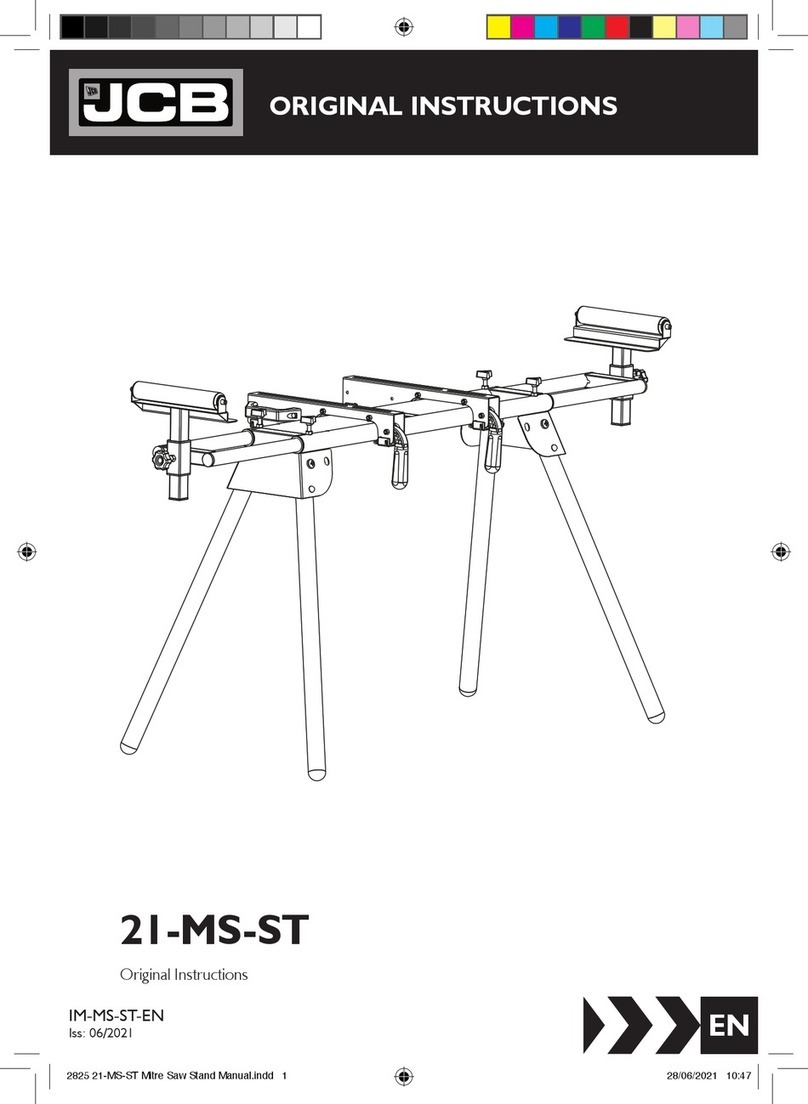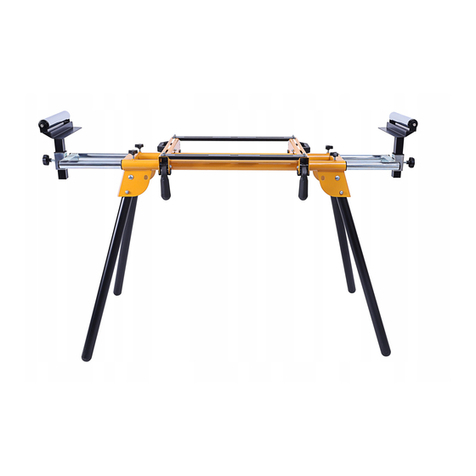
9
JCB-20BLMS
Instruction & User Manual
k) Plan your work. Every time you change
the bevel or mitre angle setting, make
sure the adjustable fence is set correctly
to support the workpiece and will not
interfere with the blade or the guarding
system. Without turning the tool “ON” and with
no workpiece on the table, move the saw blade
through a complete simulated cut to assure there
will be no interference or danger of cutting the
fence.
l) Provide adequate support such as
table extensions, saw horses, etc. for a
workpiece that is wider or longer than
the table top. Workpieces longer or wider
than the mitre saw table can tip if not securely
supported. If the cut-off piece or workpiece tips,
it can lift the lower guard or be thrown by the
spinning blade.
m)
Do not use another person as a substitute
for a table extension or as additional
support. Unstable support for the workpiece
can cause the blade to bind or the workpiece to
shift during the cutting operation pulling you and
the helper into the spinning blade.
n) The cut-off piece must not be jammed
or pressed by any means against the
spinning saw blade. If confined, i.e. using
length stops, the cut-off piece could get wedged
against the blade and thrown violently.
o) Always use a clamp or a fixture designed
to properly support round material such
as rods or tubing. Rods have a tendency to
roll while being cut, causing the blade to “bite”
and pull the work with your hand into the blade.
p) Let the blade reach full speed before
contacting the workpiece. This will reduce
the risk of the workpiece being thrown.
q) If the workpiece or blade becomes
jammed, turn the mitre saw off. Wait for
all moving parts to stop and disconnect
the plug from the power source and/or
remove the battery pack. Then work to
free the jammed material. Continued sawing
with a jammed workpiece could cause loss of
control or damage to the mitre saw.
r) After finishing the cut, release the switch,
hold the saw head down and wait for the
blade to stop before removing the cut-
off piece. Reaching with your hand near the
coasting blade is dangerous.
s) Hold the handle firmly When making an
incomplete cut or when releasing the
switch before the saw head is completely
in the down position. The braking action of
the saw may cause the saw head to be suddenly
pulled downward, causing a risk of injury.
Blade Guard
m When lowering the handle, the blade guard
rises automatically. The guard is spring
loaded so it returns to it’s original position
when the cut is completed and the handle
is raised.
m NEVER DEFEAT OR REMOVE THE BLADE
GUARD OR THE SPRING WHICH
ATTACHES TO THE GUARD.
m In the interest of your personal safety, always
maintain the blade guard in good condition.
Any irregular operation of the blade guard
should be corrected immediately. Check to
assure spring loaded return action of guard.
m NEVER USE THE TOOL IF THE BLADE
GUARD OR SPRING ARE DAMAGED,
FAULTY OR REMOVED. DOING SO
IS HIGHLY DANGEROUS AND CAN
CAUSE SERIOUS PERSONAL INJURY.

